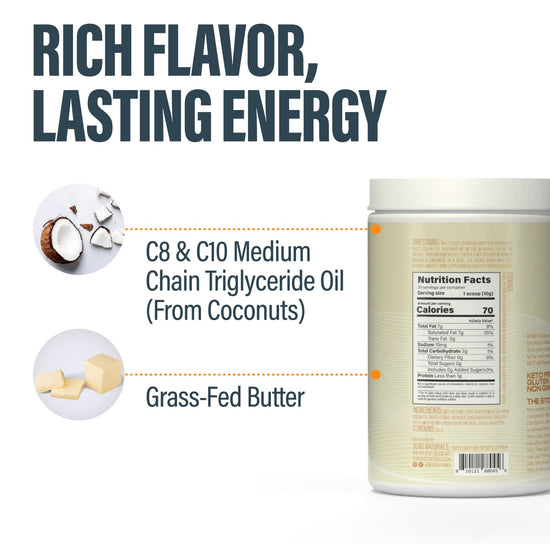Table of Contents
- Introduction
- Understanding Creamer: The Basics
- How Much Creamer Should You Use?
- Healthier Alternatives to Traditional Creamers
- The Cost of Creamer: Is It Worth It?
- Conclusion
- FAQ
Introduction
Coffee is more than just a morning ritual; it's a daily adventure for many of us. Yet, a surprising number of coffee drinkers don’t realize how significantly their choice of creamer can affect the overall flavor, calorie count, and nutritional profile of their beloved brew. Have you ever wondered how much creamer you should really be adding to your coffee?
In the quest for the perfect cup, the amount of creamer can vary widely from person to person, leading to questions about health, taste, and even the cost of our daily caffeine fix. Understanding how much creamer for coffee not only elevates our experience but can also help in aligning our choices with our wellness goals.
In this post, we will explore the various aspects of coffee creamers, from traditional options to healthier alternatives, and help you find that sweet spot in your coffee cup. We’ll dive into the significance of portion control, the nutritional implications, and how to create a coffee experience that aligns with our commitment to wellness and adventure.
By the end of this article, you will have a clearer understanding of how much creamer is appropriate for your coffee, tips for selecting healthier options, and how to incorporate them into your daily routine without compromising on flavor or fun.
So, let’s embark on this journey together and discover the optimal amount of creamer that suits our individual tastes and health goals!
Understanding Creamer: The Basics
Before we delve into the specifics of how much creamer to add to your coffee, it's essential to understand the different types of creamers available and their nutritional profiles.
Types of Creamers
-
Dairy Creamers
- Heavy Cream: Rich and thick, heavy cream is often used in small amounts for its richness.
- Half-and-Half: A blend of milk and cream that provides a creamy texture without being as heavy as full cream.
- Milk: From skim to whole, milk can be a lighter option that still adds creaminess.
-
Non-Dairy Creamers
- Almond Milk: A nut-based option that is low in calories but may lack richness.
- Coconut Milk: Adds a tropical flavor and creaminess but may contain more saturated fat.
- Soy Milk: A protein-rich alternative that offers a creamy texture.
- Oat Milk: Gaining popularity, oat milk provides a smooth texture and is often fortified with vitamins.
-
Powdered Creamers
- Coffee Creamer Powders: Often flavored and sweetened, these can be convenient but may contain additives.
Nutritional Considerations
When choosing a creamer, it’s crucial to pay attention to the ingredient list and nutritional information, especially if we are aiming for a healthy lifestyle. Here are a few considerations:
- Added Sugars: Many creamers, especially flavored ones, can contain high amounts of added sugars. For example, a tablespoon of some creamers can have up to 5 grams of sugar.
- Calories: Creamers can significantly increase the calorie count of our coffee. Knowing how much creamer you are adding is essential to managing your daily caloric intake.
- Fat Content: Depending on our dietary needs, we may want to choose creamers with lower saturated fat content.
How Much Creamer Should You Use?
The question on everyone’s mind is: how much creamer is just the right amount? There isn't a one-size-fits-all answer, as it largely depends on personal preference, the type of coffee, and the specific creamer used. However, there are some general guidelines we can follow to help us achieve that perfect cup.
Standard Serving Sizes
- Traditional Creamers: Most liquid creamers recommend a serving size of 1 tablespoon (15 ml). This provides a good baseline to start experimenting with.
- Powdered Creamers: These often have similar serving sizes of 1 tablespoon, but it's essential to check the packaging for specific recommendations.
Experimenting with Ratios
To find the perfect balance, we can conduct a simple experiment at home:
- Start with your usual coffee amount (8-12 ounces).
- Add 1 tablespoon of your chosen creamer and taste.
- Gradually increase the amount by half-tablespoons (e.g., 1.5 tbsp, 2 tbsp, etc.) until you reach your desired flavor.
This experiment not only helps us understand our preferences but can also be a fun way to engage with our coffee ritual.
The Importance of Mindfulness
As we explore our preferences, being mindful of the amount of creamer we add can help us make healthier choices. Tracking the amount can be eye-opening; for instance, many people may be surprised to learn that they’re adding more than the standard serving size—sometimes even several tablespoons!
At BUBS Naturals, we believe in a no-BS approach—only simple, effective ingredients. When it comes to creamers, this philosophy applies; we should strive to know exactly what we’re putting into our bodies.
Healthier Alternatives to Traditional Creamers
For those of us who wish to cut down on sugar and calories without sacrificing flavor, there are several healthier alternatives to traditional coffee creamers that can still provide creaminess and enhance our morning brew.
BUBS Naturals MCT Oil Powder
One of our favorites is the BUBS Naturals MCT Oil Powder, derived from coconuts. MCTs (medium-chain triglycerides) provide a clean source of energy and can enhance mental clarity. Mixing MCT Oil Powder into our coffee not only gives it a creamy texture but also supports our active lifestyle goals.
Nut-Based Creamers
Nut-based creamers, such as almond and cashew milk, are excellent lower-calorie options. They can also be fortified with vitamins and minerals, making them a nutritious choice.
Coconut Cream
For those who enjoy a creamier texture, coconut cream can be a delicious alternative. It adds a unique flavor and richness without all the sugars found in many traditional creamers.
Homemade Creamers
Creating our own creamers at home can be a fun and rewarding way to control ingredients. A simple recipe could include blending unsweetened almond milk with a splash of vanilla extract and a sweetener of choice, allowing us to customize the flavor profile to our liking.
The Cost of Creamer: Is It Worth It?
As we enjoy our coffee, it’s also essential to consider the financial aspect of our choices. Creamers can range significantly in price, with premium brands often costing more.
Calculating Cost Effectively
To determine how much we’re spending on creamer, we can evaluate:
- Frequency of Purchase: How often do we buy creamers?
- Average Serving Cost: Calculate how much each serving contributes to our daily coffee budget.
By being mindful of these factors, we can ensure that our coffee habits align with our financial wellness goals.
Conclusion
Finding the right amount of creamer for our coffee can enhance our daily ritual, support our health goals, and ultimately make every cup more enjoyable. By understanding the different types of creamers available, experimenting with serving sizes, and considering healthier alternatives, we can tailor our coffee experience to our personal preferences and wellness aspirations.
At BUBS Naturals, we are committed to providing clean, functional supplements that support an active lifestyle, and we encourage you to explore how our MCT Oil Powder can elevate your coffee routine. Remember, the journey to perfecting your coffee is as rewarding as the destination.
We invite you to share your experiences and favorite creamer combinations with us, as we continue to explore the world of coffee together!
FAQ
How much creamer should I start with in my coffee?
A good starting point is 1 tablespoon (15 ml) per 8-12 ounces of coffee. From there, you can adjust according to your taste preferences.
Are there healthier alternatives to traditional creamers?
Yes! Nut-based creamers, coconut cream, and MCT Oil Powder are excellent alternatives that can be healthier options without compromising on flavor.
Does using more creamer significantly increase my calorie intake?
Yes, using more than the recommended serving size can quickly increase your caloric intake, especially with creamers that contain added sugars.
What is the best way to experiment with the right amount of creamer?
Start with 1 tablespoon and gradually increase by half-tablespoons until you find your desired flavor. Keep track of how each addition changes the taste!
Can I make my own coffee creamer?
Absolutely! Homemade creamers can be tailored to your taste preferences, allowing you to control ingredients and sweetness. A simple recipe can include almond milk, a sweetener, and flavorings like vanilla or cocoa.
Written by:
Bubs Naturals

Butter MCT Oil Creamer
BUBS Butter MCT Oil Creamer (formerly Halo Creamer): Scientifically-Backed Brain and Body Fuel
BUBS Butter MCT Oil Creamer is your go-to for clean, fast-acting energy and focus, no crash included. It blends creamy grass-fed butter with fast-acting MCT oil powder (C8 and C10) to kickstart your day and keep you sharp. The MCTs go straight to work, giving your brain a quick boost while the grass-fed butter supports digestion and gut health.
Together, they help curb cravings, keep you feeling full longer, and support steady energy throughout the day—perfect for fueling your mornings or powering through the afternoon slump.
Starts at $37.00
Shop

